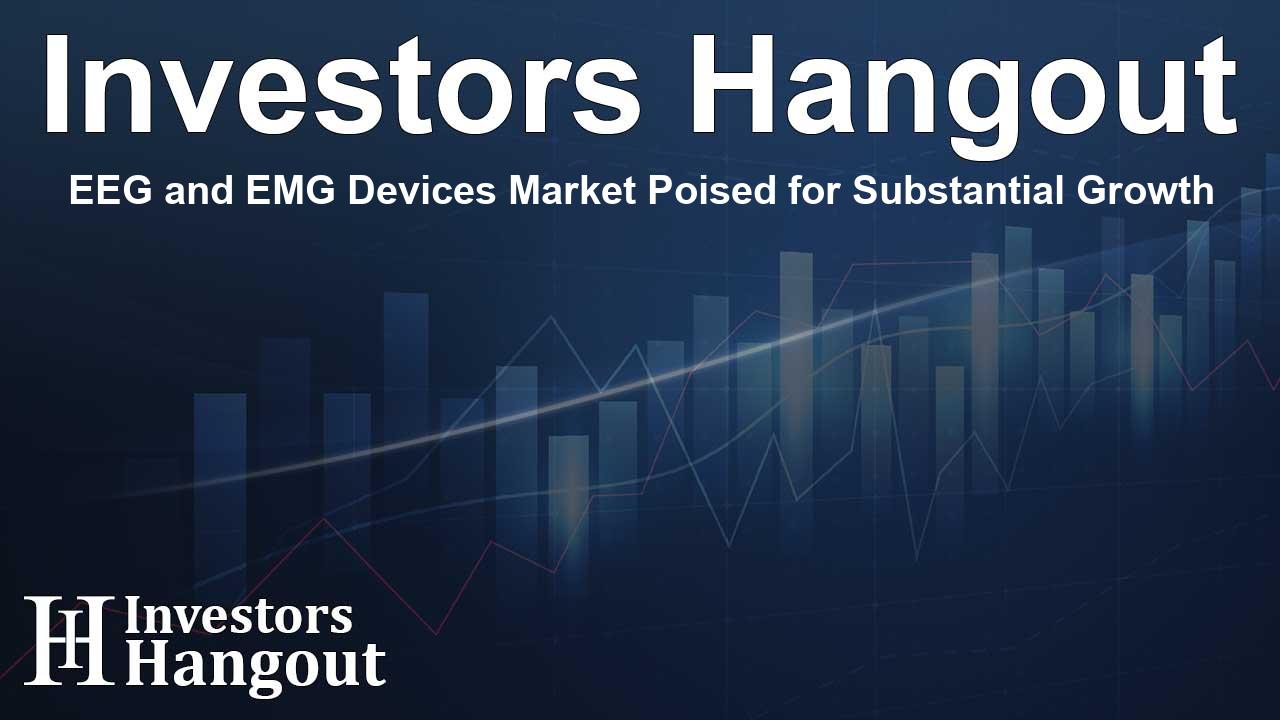EEG and EMG Devices Market Poised for Substantial Growth

Growth Predictions for EEG and EMG Devices Market
The global market for EEG and EMG devices is experiencing a significant surge, with projections suggesting a growth of approximately USD 793.5 million from 2024 to 2028. This growth is anticipated to occur at a compound annual growth rate (CAGR) of nearly 7.84%, highlighting the increasing demand driven by a rising prevalence of neurological conditions. With advancements in hybrid brain-computer interface (hBCI) technologies further propelling this sector, there is a concerted shift towards the adoption of these innovative medical devices.
Key Drivers Behind Market Expansion
Increasing Neurodiagnostic Needs
The surge in cases associated with neurological disorders such as epilepsy, migraines, and Parkinson's disease is creating a heightened need for effective diagnostic tools. EEG and EMG devices, known for their role in monitoring brain and muscle activity, are becoming indispensable in diagnosing and managing these conditions.
Rising Popularity of Hybrid Systems
Hybrid systems combining EEG with other functionalities, such as EMG and EOG (electrooculography), are gaining traction due to their enhanced capabilities. These systems facilitate a multifaceted approach to brain activity monitoring, thus offering improved command outputs for assistive technologies, such as communication aids for patients with limited mobility.
Challenges Facing the Market
Despite the optimistic outlook, the EEG and EMG devices market faces substantial challenges. A primary concern is the high costs associated with these advanced diagnostic tools. These expenses can deter healthcare providers from adopting new technologies, particularly in developing regions where budgets are constrained. The cost spectrum for EEG headsets varies drastically—from USD 100 for basic models to upwards of USD 25,000 for high-performance setups—placing a burden on end-users and healthcare systems.
Technical Limitations
Another challenge is the technical precision required for effectively capturing brain and muscle signals. EMG equipment can inadvertently interfere with EEG readings, complicating diagnostic efforts. Furthermore, ensuring accurate real-time data capture in varied conditions—such as during sleep or physical activity—remains a crucial focus for manufacturers.
Market Segmentation Insights
The EEG and EMG devices market can be segmented by product types, modalities, and geography. Understanding these segments is essential for tailoring medical solutions to specific needs. The primary categories include:
- Product Types:
- EEG Devices
- EMG Devices
- Modalities:
- Standalone Systems
- Portable Systems
- Geographical Regions:
- North America
- Europe
- Asia
- Rest of the World (ROW)
Technological Innovations in EEG and EMG Devices
Advancements in technology are fundamentally reshaping the EEG and EMG landscape. Portable devices are witnessing increased attention, allowing for flexible monitoring in daily use scenarios. Technologies such as cloud computing are enhancing real-time data accessibility and processing, which can significantly improve the efficiency of patient care.
Impact of Artificial Intelligence
AI technologies are also playing a transformative role in this market. By analyzing large datasets of neurological activity, AI can help refine diagnostic techniques and enhance the ability to detect anomalies in brain patterns, potentially leading to quicker interventions and better patient outcomes.
Future Outlook for the EEG and EMG Market
The future of the EEG and EMG devices market looks promising, with continuous innovations expected to deliver more advanced, user-friendly equipment. Given the ongoing rise in neurological conditions and the demand for reliable diagnostic tools, manufacturers are well-placed to capitalize on these trends. Closely monitoring the adoption rates of hBCI technologies and adapting to the evolving clinical needs will be crucial for stakeholders aiming to secure a competitive edge in this growing market.
Frequently Asked Questions
What is driving the growth of the EEG and EMG devices market?
The demand for EEG and EMG devices is driven by an increasing prevalence of neurological conditions and the popularity of hybrid brain-computer interface technologies.
What are the challenges facing this market?
High costs associated with EEG and EMG devices, as well as technical limitations related to data capture and signal interference, pose significant challenges.
How are AI technologies influencing the market?
AI technologies enhance diagnostic processes by analyzing brain activity patterns, leading to quicker and more accurate interventions.
What are the key segments in the EEG and EMG devices market?
The market can be segmented by product types (EEG and EMG), modalities (standalone and portable), and geographical regions.
What is the outlook for future developments in this sector?
The future looks promising with ongoing technological advancements expected to create safer, more effective EEG and EMG devices, catering to increasing healthcare demands.
About Investors Hangout
Investors Hangout is a leading online stock forum for financial discussion and learning, offering a wide range of free tools and resources. It draws in traders of all levels, who exchange market knowledge, investigate trading tactics, and keep an eye on industry developments in real time. Featuring financial articles, stock message boards, quotes, charts, company profiles, and live news updates. Through cooperative learning and a wealth of informational resources, it helps users from novices creating their first portfolios to experts honing their techniques. Join Investors Hangout today: https://investorshangout.com/
Disclaimer: The content of this article is solely for general informational purposes only; it does not represent legal, financial, or investment advice. Investors Hangout does not offer financial advice; the author is not a licensed financial advisor. Consult a qualified advisor before making any financial or investment decisions based on this article. The author's interpretation of publicly available data shapes the opinions presented here; as a result, they should not be taken as advice to purchase, sell, or hold any securities mentioned or any other investments. The author does not guarantee the accuracy, completeness, or timeliness of any material, providing it "as is." Information and market conditions may change; past performance is not indicative of future outcomes. If any of the material offered here is inaccurate, please contact us for corrections.